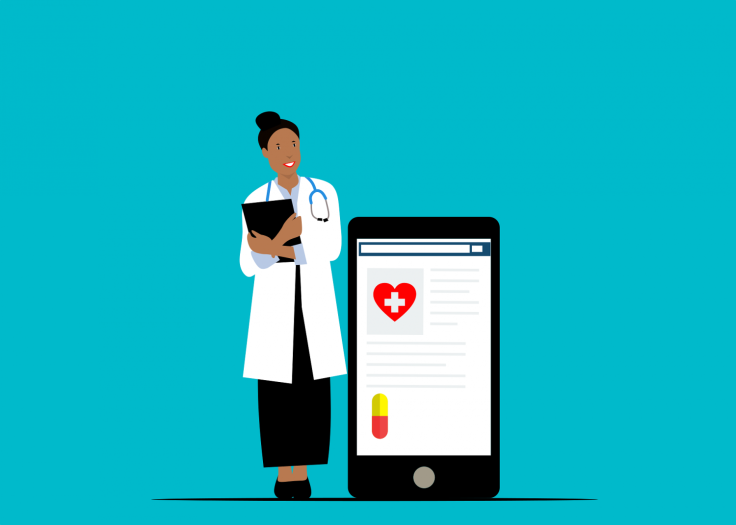
System security and protection of sensitive data are critical for any organization. After all, even the best software completely loses its value when hacked or leaked. That is why healthcare data security is something that medical institutions should pay special attention to when developing software.
Data protection is a complex and multi-layered thing that includes many details. In the case of healthcare software, some of the main ones are:
Latest security protocols
Release of new updates and patches
Compliance with industry standards
User guidelines and safety explanations
That is, data security depends on several factors: from software and its security to the correct use of the software and understanding of possible risks by the user.
Therefore, let's consider the most common threats today and how they can be avoided to ensure the stable operation of medical software without hacks and data leaks, as well as loss of reputation and trust in the organization, which is a frequent consequence of any hack.
5 Common Threats For Security
Unauthorized Access
It is one of the "popular" threats. At the same time, unauthorized access to data does not always mean external hacking of the system. Such a problem can also arise from the inside when one of the employees accidentally or maliciously discloses sensitive data.
In addition, sometimes data leakage can be the result of a security breach, such as when saving data to a flash drive, transferring data via email or chats, or due to incomplete logout after a session.
Phishing
Another common type of scam is phishing. It is social engineering when a hacker tries to ingratiate himself to gain access to data and systems of interest to him to obtain benefits.
In the case of medical organizations, phishing can often be done through email or personal communication with a potential "victim."
Phishing refers to tricking a user into providing their credentials, revealing sensitive data, or downloading malware to gain access to the healthcare system.
DDoS Attacks
It is a relatively easy way to impact the system. A DDoS (Dedicated Denial of Service) attack is performed to shut down a server by sending large amounts of traffic and requests to it. Such attacks can be carried out both to create "trouble" for the organization or obtain a ransom.
Mobile Platform Vulnerabilities
Since digitalization is taking place in the modern healthcare industry, mobile applications, tablets, and other wearable devices are increasingly used in medical practice. Therefore, the security of software for mobile platforms is of critical importance since hacking a single application can give a hacker the whole range of data: from the personal information of patients and internal communications to prescriptions and purchases of an organization.
Ransomware
Another threat medical organizations and vendors may face is ransomware. This is malware by which a hacker either deletes or blocks access to data, some parts of the system, or the entire system to obtain a ransom.
How To Improve Security
So, how to strengthen your healthcare data security with software? The first step to getting started is to cooperate with reliable developers. It is crucial that the software complies with industry standards (HIPAA, CCPA, EO 14028, GDRP, etc.) and that developers continue to support the product after release (updates, patches, and bug searches). This approach solves most of the possible problems.
In addition, it is also essential to train the staff, explaining how to use the software correctly to avoid leaks and hacks.
In the case of medical software, the following should be guaranteed:
Control Data Accessibility
It means that access to data and systems must be protected. Particular attention should be paid to the administrative level since it requires the highest level of protection. Ignoring data access for different users at great risk can lead to data leakage.
To avoid it, you can apply:
2-factor or multi-factor authentication
Biometrics (fingerprint, facial recognition)
Access for authorized users only
Principle of least privilege (PoLP)
Data Controls
This means that in addition to accessing data, it is necessary to implement data control elements. For example, the system will give alerts when there are:
Risky or atypical behavior
Data exfiltration attempts
Sending data via third-party channels (email, chats)
Copying data to external drives
Encryption
Encryption is one of the best ways to protect against leakage of sensitive data. The HIPAA standard requires organizations to provide strong data encryption. This is especially critical when storing, transferring, and decrypting data with a key.
Backups
System backup is needed to protect yourself from problems if something goes wrong. Data leakage, hacks, or system blocking can completely stop operations, which is highly undesirable for medical organizations. That is why having a copy of all the data helps to get back to work quickly while the security department solves problems. In addition, this approach helps not to lose important data by accident.
In Conclusion
Data security is a top priority for any business, especially in the healthcare industry. Ignoring security standards or poorly secured systems may create problems and lead to fines, lawsuits, and loss of company reputation. In addition, there were many cases when hacking the system led to the collapse of the business. That is why safety should always be given special attention.
However, system protection is not only about the software. Organizations need to take the following steps:
Work with experienced and reputable development teams
Implement the latest security protocols in software
Comply with the requirements and standards of the industry regulator
Conduct safety briefings for employees
These actions greatly reduce the risk of breaches and allow organizations to strengthen their security.
Learn more at Ralabs.









